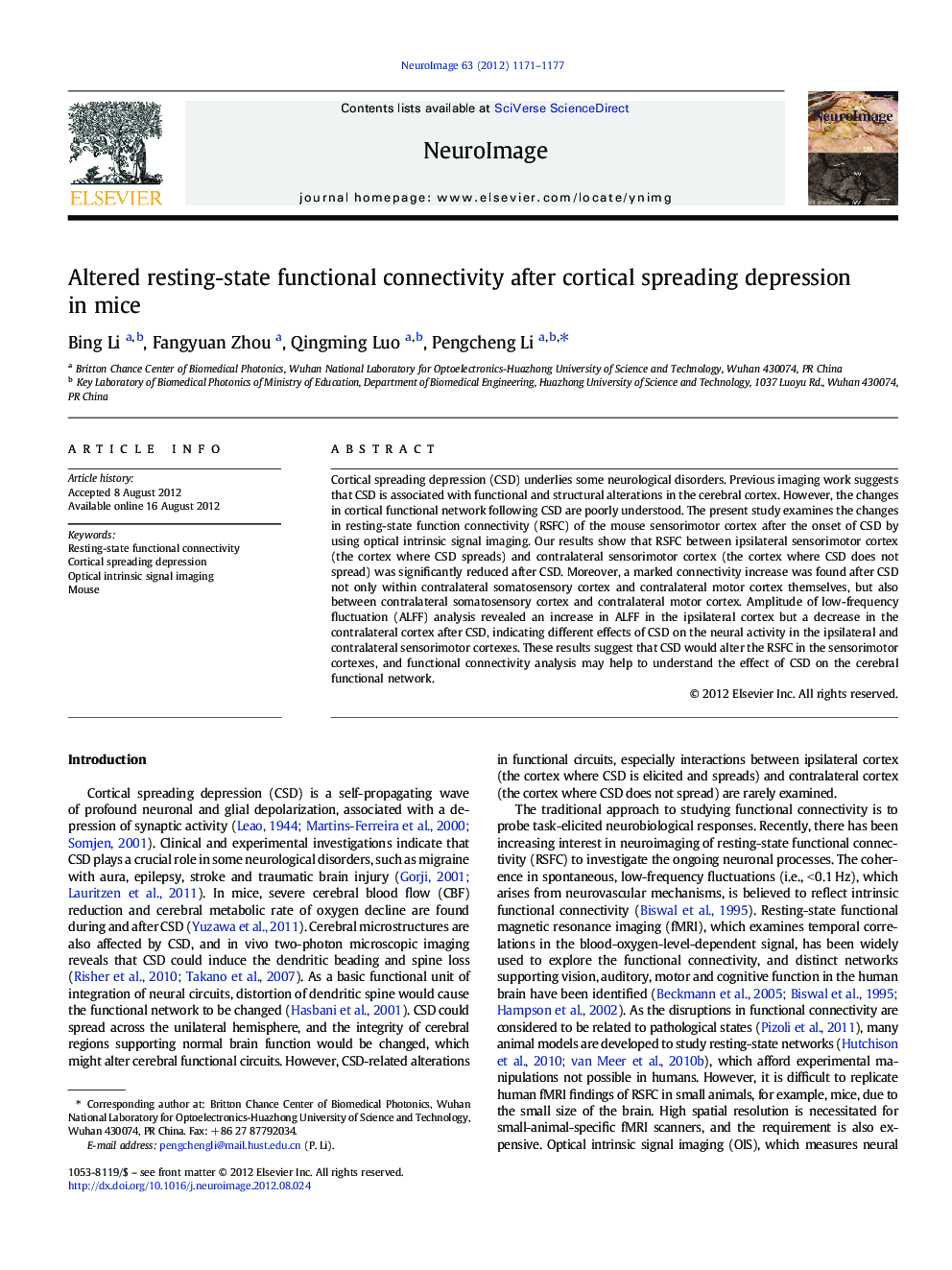| Article ID | Journal | Published Year | Pages | File Type |
|---|---|---|---|---|
| 6031099 | NeuroImage | 2012 | 7 Pages |
Cortical spreading depression (CSD) underlies some neurological disorders. Previous imaging work suggests that CSD is associated with functional and structural alterations in the cerebral cortex. However, the changes in cortical functional network following CSD are poorly understood. The present study examines the changes in resting-state function connectivity (RSFC) of the mouse sensorimotor cortex after the onset of CSD by using optical intrinsic signal imaging. Our results show that RSFC between ipsilateral sensorimotor cortex (the cortex where CSD spreads) and contralateral sensorimotor cortex (the cortex where CSD does not spread) was significantly reduced after CSD. Moreover, a marked connectivity increase was found after CSD not only within contralateral somatosensory cortex and contralateral motor cortex themselves, but also between contralateral somatosensory cortex and contralateral motor cortex. Amplitude of low-frequency fluctuation (ALFF) analysis revealed an increase in ALFF in the ipsilateral cortex but a decrease in the contralateral cortex after CSD, indicating different effects of CSD on the neural activity in the ipsilateral and contralateral sensorimotor cortexes. These results suggest that CSD would alter the RSFC in the sensorimotor cortexes, and functional connectivity analysis may help to understand the effect of CSD on the cerebral functional network.
⺠We examine the RSFC after CSD by using optical intrinsic signal imaging. ⺠RSFC between bilateral sensorimotor cortexes is reduced after CSD. ⺠RSFC within contralesion sensorimotor cortexes is increased after CSD. ⺠CSD seems to have different effects on spontaneous activity in bilateral cortexes.
